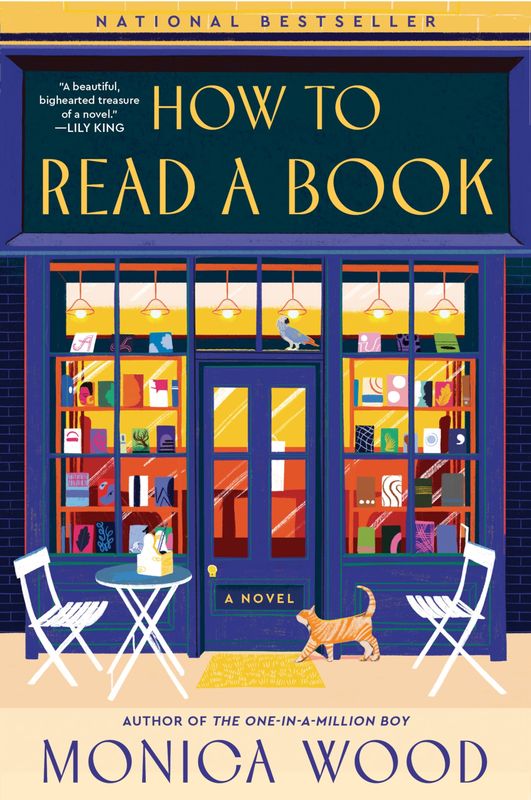Beautiful Evidence Book Summary
In 'Beautiful Evidence', Edward R. Tufte explores the art of presenting information in a visually compelling and meaningful way. He argues that the presentation of data can reveal hidden stories and insights, transforming raw numbers into powerful narratives. Through stunning examples and elegant design principles, Tufte invites readers to reconsider how they communicate complex information. This book is a thought-provoking blend of aesthetics and analytics, appealing to anyone who strives for clarity in conveying information. Dive into a world where beauty meets utility, and discover how effective visual evidence can change perceptions.
By Edward R. Tufte
Published: 2006
""Good information design allows the eye to see patterns, trends, and insights that are otherwise obscured; it transforms data into knowledge and fosters understanding in the viewer.""
Book Review of Beautiful Evidence
Science and art have in common intense seeing, the wide-eyed observing that generates empirical information. Beautiful Evidence is about how seeing turns into showing, how empirical observations turn into explanations and evidence presentations. The book identifies excellent and effective methods for presenting information, suggests new designs, and provides tools for assessing the credibility of evidence presentations.Here we will see many close readings of serious evidence presentations-ranging through evolutionary trees and rocket science to economics, art history, and sculpture. Insistent application of the principles of analytical thinking helps both insiders and outsiders assess the credibility of evidence.
Book Overview of Beautiful Evidence
About the Book Author
Edward R. Tufte
Edward R. Tufte is an esteemed statistician, professor emeritus of political science, statistics, and computer science at Yale University, and a pioneer in the fields of information design and data visualization. He is best known for his influential books, including 'The Visual Display of Quantitative Information', 'Envisioning Information', 'Visual Explanations', and 'Beautiful Evidence', which emphasize the importance of clarity and aesthetics in presenting complex data. Tufte's writing style is characterized by precision and an emphasis on visual elements, advocating for the effective communication of data through well-designed graphics and charts.
Book Details
Key information about the book.
- Authors
- Edward R. Tufte
- Published
- January 2006
- Publisher
- N/A
- ISBN
- 0961392177
- Language
- English
- Pages
- 213
- Genres
- Design ThinkingDesign
Purchase Options
Support local bookstores: BookShop gives a portion of each sale to independent bookshops!
Similar books you might like →
The Undoing Project Book Summary
In 'The Undoing Project', Michael Lewis explores the groundbreaking collaboration between two Israeli psychologists, Daniel Kahneman and Amos Tversky, whose revolutionary theories on decision-making changed our understanding of human rationality. Their research reveals the cognitive biases that influence our choices, often leading us astray in unexpected ways. Through compelling anecdotes and vivid storytelling, Lewis uncovers how their work not only transformed psychology but also impacted economics, medicine, and public policy. As their friendship deepens amid professional triumphs and personal struggles, the book delves into the complexities of the human mind and the power of perspective. Will their insights lead to a newfound awareness of our own thought processes? Discover the fascinating tale behind the science of thinking.
How to Read a Book Book Summary
'How to Read a Book' transforms the act of reading into an art form, guiding readers to engage deeply with texts. Mortimer J. Adler and Charles Van Doren reveal techniques that elevate mere reading to insightful analysis and comprehension. This book introduces a systematic approach to different genres, encouraging readers to ask critical questions and reflect on their understanding. With practical advice and thought-provoking insights, it empowers readers to become active participants in the learning process. Journey beyond passive reading and unlock the secrets to true literary appreciation!
An Essay on Typography Book Summary
In 'An Essay on Typography,' Eric Gill explores the art and craft of type design, revealing how typography shapes our perception of written language. Through a blend of philosophical musings and practical insights, Gill argues that type is not just a tool for communication, but an integral aspect of visual culture. He challenges conventional approaches and invites readers to appreciate the aesthetic and ethical implications of typographic choices. This thought-provoking essay raises questions about the role of the designer in society and the impact of typography on our daily lives. Dive into Gill's world to uncover the beauty and power of letters that often goes unnoticed.
The Designer's Dictionary of Type Book Summary
Delve into the fascinating world of typography with 'The Designer's Dictionary of Type' by Sean Adams. This comprehensive guide unravels the intricacies of typefaces, revealing their unique personalities and historical contexts. Each entry offers insights that inspire creativity and enhance design skills, making it an essential reference for both novice and seasoned designers. With stunning visual examples, the book encourages a deeper appreciation for the art and science of type. Discover how the right type can transform your work and captivate your audience!
The Design of Everyday Things Book Summary
In 'The Design of Everyday Things', Don Norman reveals the hidden principles behind effective design that shapes our everyday interactions. He explores the psychological underpinnings of how we perceive and interact with objects, highlighting the importance of usability and user-centered design. Through captivating examples, Norman illustrates how poor design can lead to frustration, while thoughtful design enhances our experience. This book challenges readers to rethink the functionality of everyday items, making them consider the design choices behind the objects they encounter. Ultimately, it invites us to demand better designs that cater to our needs, making the mundane extraordinary.
100 Things Every Designer Needs to Know about People Book Summary
In '100 Things Every Designer Needs to Know about People,' Susan Weinschenk unveils essential psychological principles that can enhance design effectiveness. With insights drawn from cognitive science, the book explores how people perceive, interact with, and make decisions about design. From the nuances of color perception to the importance of empathy in user experience, Weinschenk offers practical strategies for designers. Each principle is supported by fascinating research, making the content both informative and engaging. This enlightening guide equips designers to create more intuitive and user-friendly experiences, sparking curiosity about the intersection of psychology and design.
The Art of Game Design Book Summary
In 'The Art of Game Design,' Jesse Schell unravels the captivating world of game development, blending theory and practical insights. He presents a unique perspective that gaming is not just a skill but an art form, exploring what truly makes games immersive and memorable. With a combination of engaging anecdotes and hands-on exercises, Schell invites readers to think like designers and embrace creativity. The book serves as a comprehensive guide, making it an essential read for aspiring game creators and enthusiasts alike. Dive into the playful intricacies of design and discover the secrets that could inspire your next game masterpiece!
Rocket Surgery Made Easy Book Summary
In 'Rocket Surgery Made Easy', Steve Krug demystifies the process of usability testing, arguing that it's not rocket science—it's just common sense. Krug presents simple, practical techniques that anyone can use to identify and fix usability issues in their designs. Through engaging anecdotes and clear instruction, he empowers teams to enhance user experience without the need for extensive resources or expertise. This book transforms the way we think about user testing, making it accessible and effective for all. Prepare to revolutionize your approach to design and make your products truly user-friendly!
Showing 8 of 28 similar books
Similar Book Recommendations →

Bret Victor's Book Recommendations
Bret Victor is a renowned American interface designer and computer scientist celebrated for his innovative contributions to interactive design and human-computer interaction. He is best known for creating dynamic, explorable explanations, which have significantly influenced the way educational content is presented and understood. Victor's seminal work, "Inventing on Principle," advocates for the integration of immediate feedback in creative processes, inspiring a new wave of interactive programming environments. As a former member of the Apple Human Interface team, he played a pivotal role in shaping modern user interfaces. Through his organization, Dynamicland, Victor continues to explore and expand the boundaries of immersive, collaborative computing environments.

George Hatzis's Book Recommendations
George Hatzis is a lawyer, entrepreneur, and social media content creator known for his humorous and insightful takes on the legal profession. Through his popular Instagram account, Hatzis shares legal memes, advice, and commentary, making complex legal topics accessible and entertaining for a broad audience. He is also the founder of Hatzis Law, a firm that specializes in criminal defense and family law. Hatzis’ ability to merge legal expertise with humor has garnered him a large following, and he continues to be a unique voice in the legal community, advocating for modernizing the industry.

Audrey Gelman's Book Recommendations
Audrey Gelman is an American entrepreneur and writer, best known as the co-founder and former CEO of The Wing, a network of co-working spaces and social clubs designed for women. She has been recognized for her innovative approach to creating supportive environments for professional women, significantly impacting feminist discourse and workplace equality. Gelman has also contributed thought-provoking essays to prominent publications such as The New York Times and The New Yorker, where she discusses gender, politics, and culture. Her leadership at The Wing has been celebrated for fostering community and collaboration among women. Additionally, Gelman's influence extends to the political sphere, having previously worked as a press aide on several high-profile campaigns.

Kevin Rose's Book Recommendations
Kevin Rose is a notable entrepreneur and technology investor, best known for founding Digg, a pioneering social news website that significantly influenced online content sharing. Although not primarily recognized for literary contributions, Rose has impacted digital media and online culture, which are recurring themes in contemporary literature on technology. His insights and experiences have been featured in various tech journals and books, enriching discussions on innovation and digital entrepreneurship. Rose also co-hosted the popular podcast "The Random Show" with Tim Ferriss, where he shares his thoughts on technology, health, and productivity. Through his ventures and public speaking, Rose continues to inspire narratives around the digital revolution and startup culture.

Andrew Chen's Book Recommendations
Andrew Chen is a venture capitalist, entrepreneur, and thought leader in growth marketing, currently serving as a general partner at Andreessen Horowitz. Chen is known for his expertise in network effects, viral growth strategies, and marketplace dynamics, making him a sought-after advisor for startups looking to scale. Prior to joining Andreessen Horowitz, he worked in leadership roles at Uber, helping to grow the ride-sharing platform’s user base and develop key growth strategies. Chen is also a prolific writer, sharing his insights on growth, technology, and startups through his popular blog and newsletter, which has attracted a loyal following in the tech community. His work has helped shape how many startups approach user acquisition, retention, and product-market fit. As a venture capitalist, Chen focuses on early-stage companies in the consumer internet, SaaS, and marketplace sectors, and he has been involved in funding and advising several successful startups. His insights on technology and growth continue to influence both founders and investors alike.

Ben Silbermann's Book Recommendations
Ben Silbermann is the co-founder and former CEO of Pinterest, the popular image-sharing and social media platform. Launched in 2010, Pinterest has grown into a global platform used by millions to discover and share ideas and inspiration. Silbermann’s background in product design and user experience helped shape Pinterest’s visually driven and user-friendly interface. He has stepped down as CEO but remains active in the company’s direction and strategy. His work has made him a significant figure in tech and social media innovation.

Daniel Burka's Book Recommendations
Daniel Burka is a prominent figure in the tech and design world, best known for his significant contributions to digital product design. As a design partner at GV (formerly Google Ventures), he has played a crucial role in shaping the user experience of numerous successful startups. Burka co-founded the design agency MetaLab, which has worked with top-tier clients like Slack and Coinbase. Additionally, his work at Digg as the Director of Design helped pioneer social media design trends in the early 2000s. While not primarily an author, Burka's influence extends into literature through his insightful writings and talks on design and innovation.

Jason Fried's Book Recommendations
Jason Fried is an influential entrepreneur and author best known as the co-founder and CEO of Basecamp, a project management and team collaboration software company. He has notably co-authored several best-selling books, including "Rework" and "Remote: Office Not Required," which challenge conventional business practices and advocate for more efficient, flexible work environments. Fried's clear, straightforward writing style has resonated with a wide audience, making complex business concepts accessible. His work has significantly contributed to the discourse on modern work culture and productivity. Fried continues to influence contemporary business thought through his writing and leadership at Basecamp.
Showing 8 of 17 related collections
“"Good information design allows the eye to see patterns, trends, and insights that are otherwise obscured; it transforms data into knowledge and fosters understanding in the viewer."”
Beautiful Evidence
By Edward R. Tufte
Frequently Asked Questions
Explore Our Catalogue
Discover a world of knowledge through our extensive collection of book summaries.
Genres
Genres
Genres
Featured Collections
- Top Book Club Picks
- One-Stop Nutrition
- Summer Reads 2024
- Best Beach Reads 2024
- Work-Life Balance Guide
- Time Management
- Healthy Foods
- Entrepreneur Toolkit
- Mind & Body Wellness
- Future Tech Insights
- Leadership Essentials
- Financial Freedom
- Sci-Fi Masterpieces
- Parenting 101
- Books That Became Blockbusters
- Guide to a Healthy Pregnancy










